Using Repeatable Queries to update a database with result sets
In EdgeLake, a Repeatable Query is a query placed on the EdgeLake rule engine, executed repeatedly, and configured to update a target table with the query results.
A common use case is to provide result sets to BI tools and third-party applications that do not support the REST API.
For these tools and applications, results sets of queries over the network data are hosted in a database.
For example, Tableu and Lookr do not support the REST API but can leverage Repeatable Queries.
The examples below places the network data in PotgreSQL.
Setting up PostgreSQL
- Install PostgresSQL
- In
postgresql.conf, updatelisten_address value to allow remote accesslisten_addresses = '*' - In
pg_hba.conf, add the following line at the bottom of the pagahost all all 0.0.0.0/0 md5 - Restart PostgresSQL instance
Executing Query
- On EdgeLake connect
>system_queryto Postgres database<connect dbms system_query where type=psql and ip=127.0.0.1 and port=5432 and user=anylog and password=demo> - Execute query - as repeatable query
run client () sql aiops format=table and table=fic11_mv and drop=true "select increments(hour, 1, timestamp), min(timestamp), min(value), avg(value), max(value) from fic11_mv where timestamp >= NOW() - 1 day" - Utilize
query explainto view how the results are generatedAL aiops-single-node < query explain 07 Remote DBMS : aiops 07 Remote Table : fic11_mv 07 Source Command : select increments(hour, 1, timestamp), min(timestamp), min(value), avg(value), max(value) from fic11_mv where timestamp >= NOW() - 1 day 07 Remote Query : select date_trunc('day',timestamp), (extract(hour FROM timestamp)::int / 1), min(timestamp), min(value), SUM(value), COUNT(value), max(value) from fic11_mv where timestamp >= '2022-01-17T18:31:31.442147Z' group by 1,2 07 Local Create : create table new_table (increments_1_trunc timestamp without time zone, increments_1_extract integer, min_2 timestamp without time zone, min_3 double precision, SUM__value numeric, COUNT__value integer, max_5 double precision); 07 Local Query : select min(min_2), min(min_3), SUM(SUM__value) /NULLIF(SUM(COUNT__value),0), max(max_5) from new_table group by increments_1_trunc,increments_1_extract order by increments_1_trunc,increments_1_extract
Note:
- In the example above, output is placed in table named: fic11_mv.
- If drop is set to True, every query execution deletes the previous result sets. Users can configure the process to be incremental to the previous result sets.
- The Query Options document details the query configuration options.
Extract Data onto Tableau
- Download & Install Tableau
- Under Data → Data Sources select PostgresSQL connector type
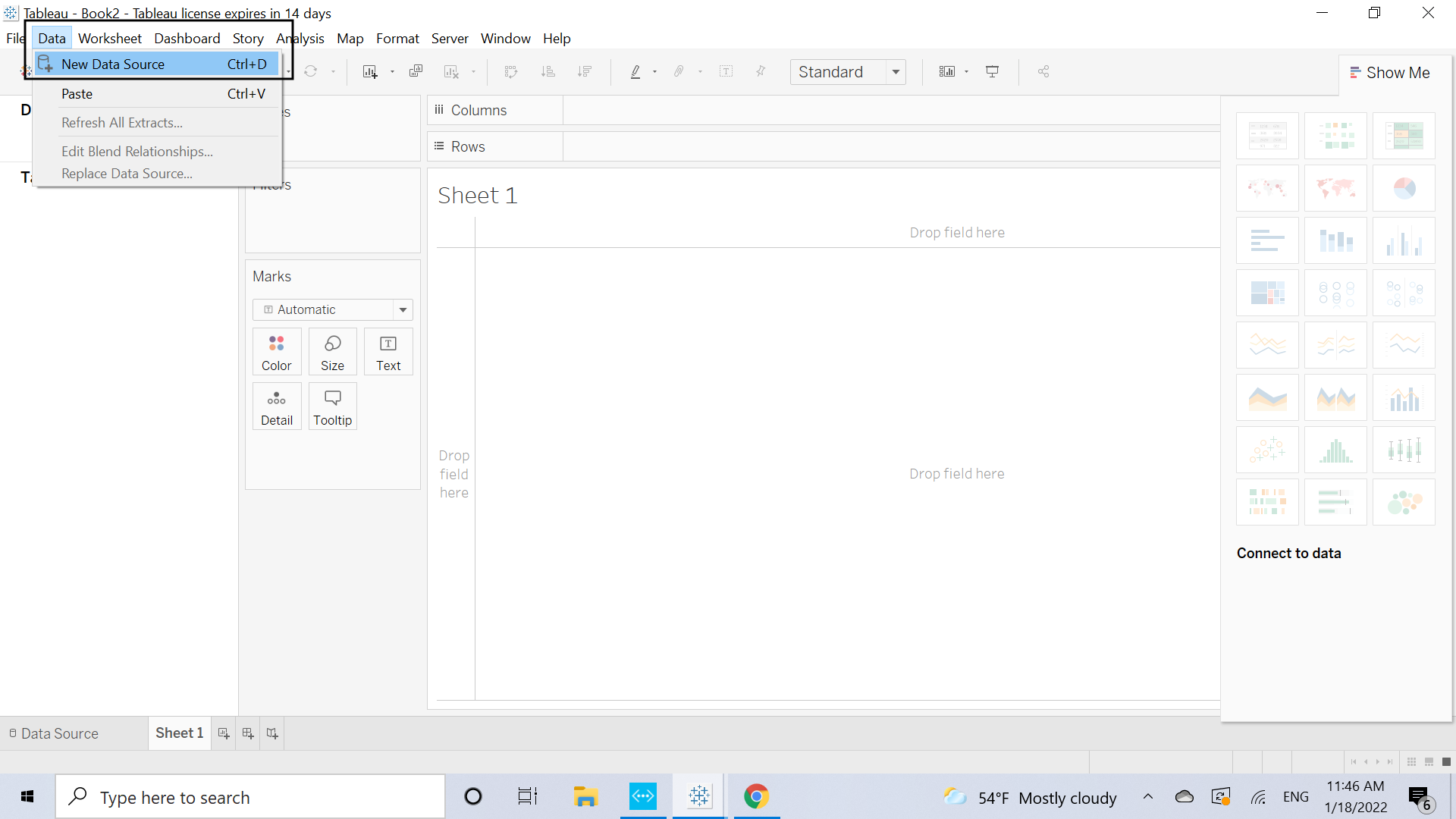
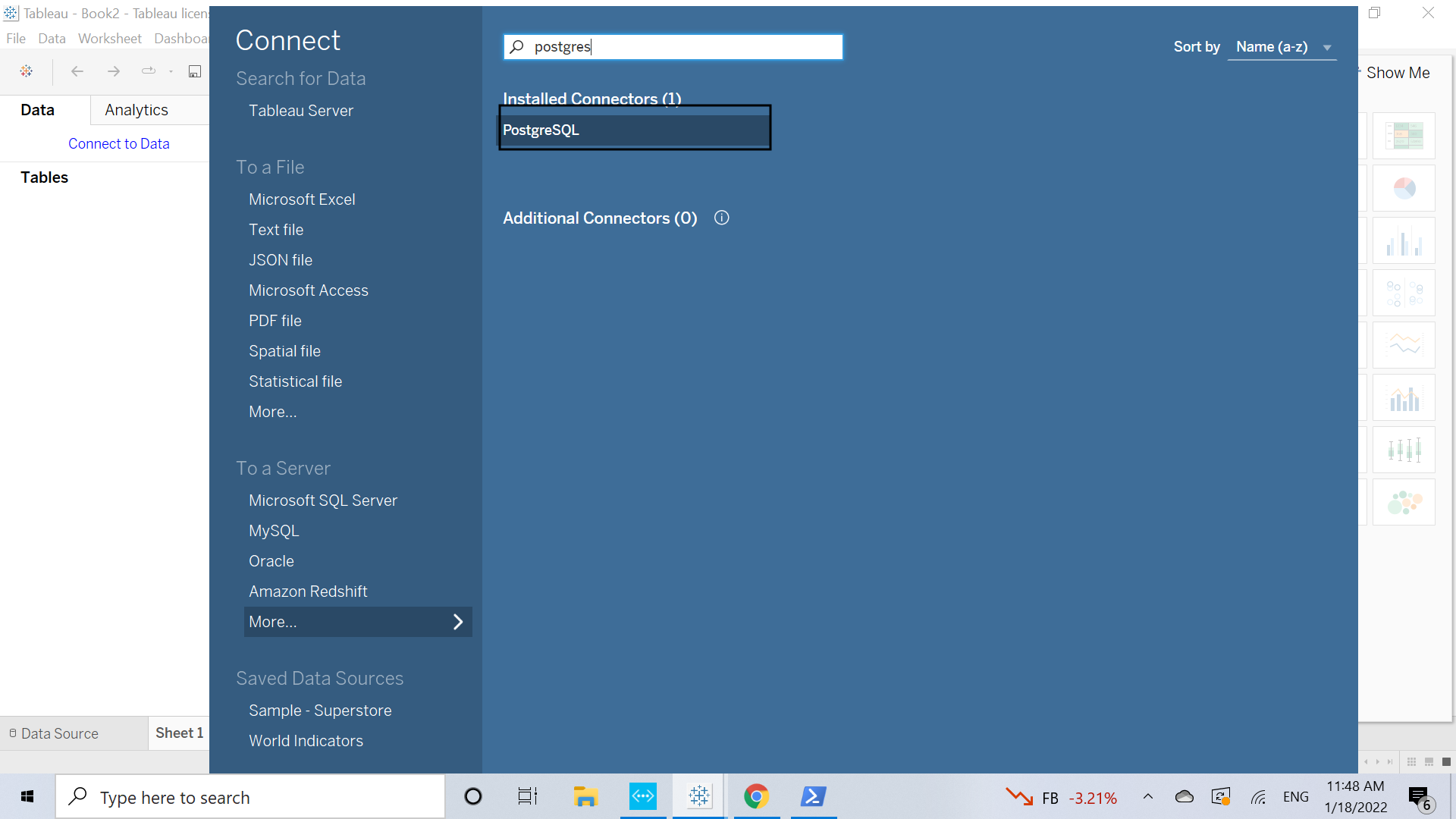
- Fill-out the information to connect to database & Press "Ok"
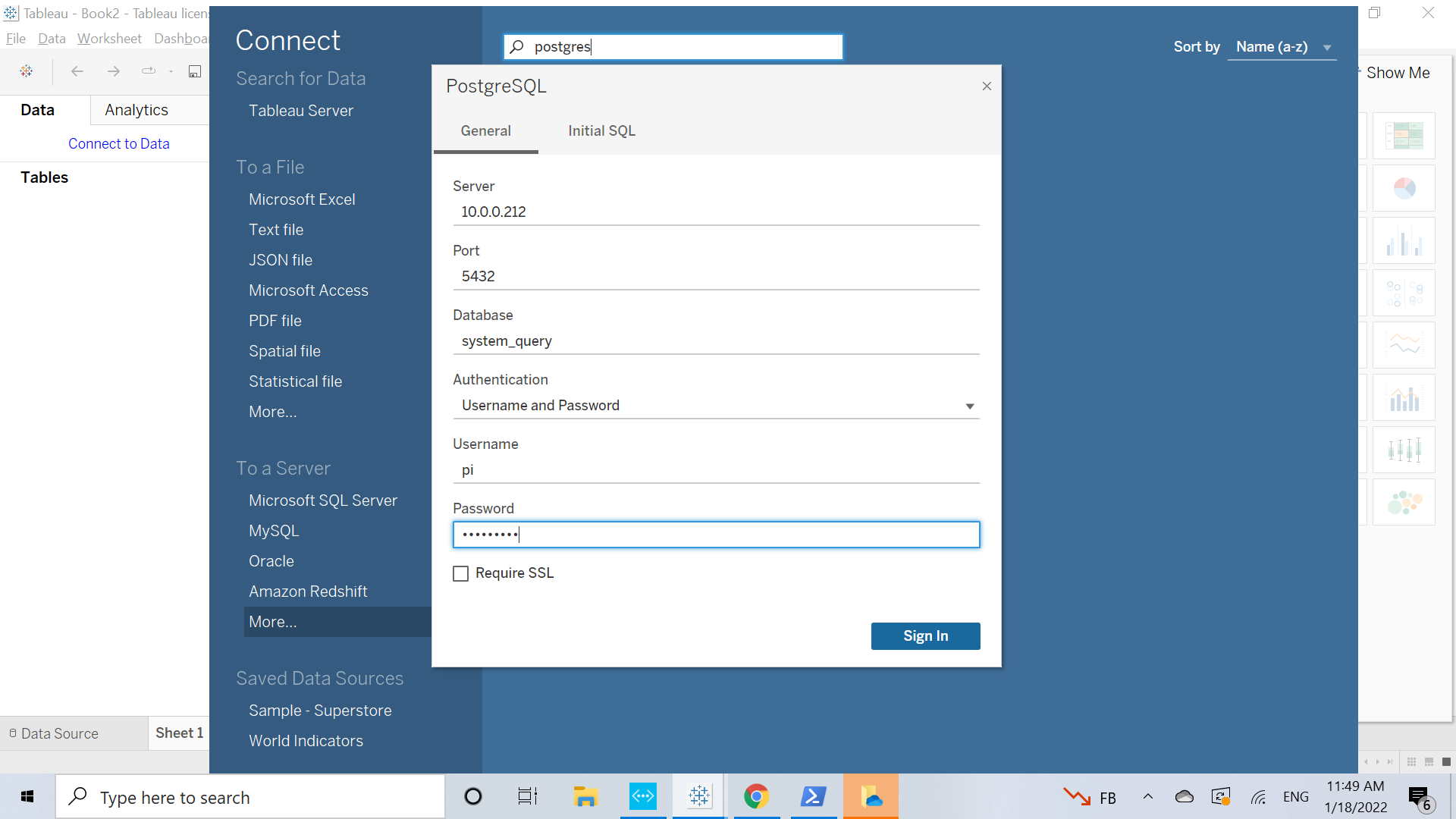
- Double-click on the table you want to use (in this case
new_table) and go to worksheet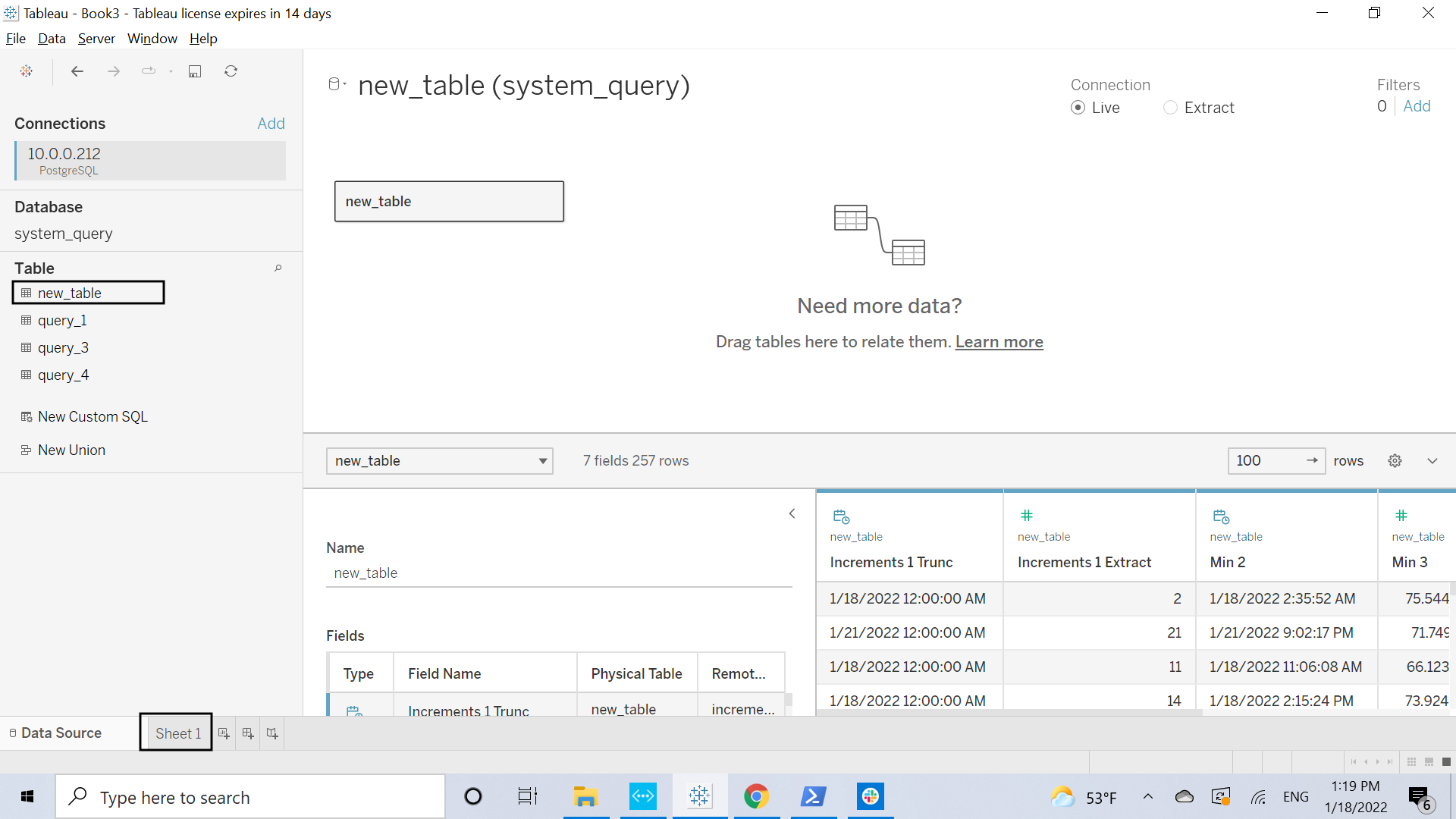
Generating Graphs
The system_query database gathers (query) results from the different instances to generate a unified dataset for the user. As such, generating graphs from the final results is a bit complicated.
- Min 2 - is column
MIN(timestamp) - Min 3 - is column
MIN(value) - SUM(SUM__VALUE) / COUNT(new_table_count) – is column
AVG(value) - MAX 5 - is column
MAX(value)
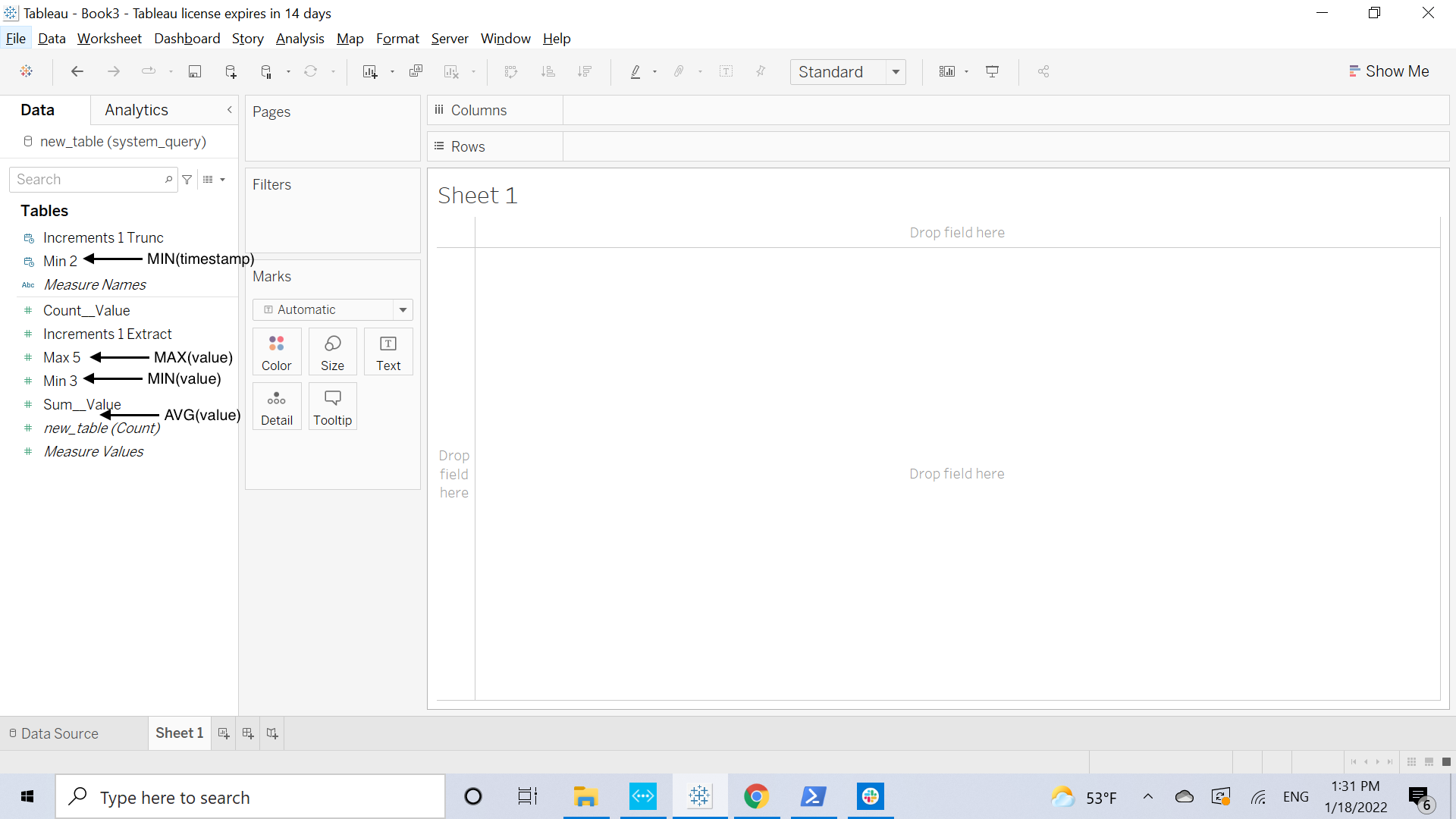
To generate a graph, use “Min 2” as Columns and all others for Rows

